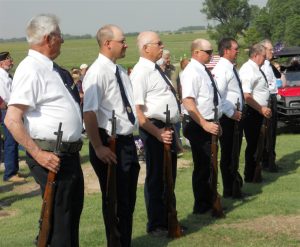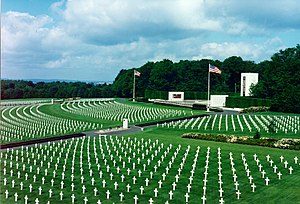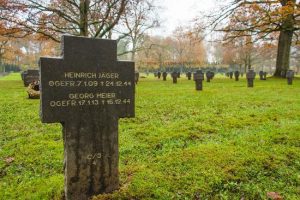
It was the morning smell in a residential neighborhood that reminded me of Memorial Day and why it was so important to me as a young man growing up in rural Kansas.
Freshly-cut grass. It’s what I always remember about Memorial Days past—those from small-town America where former soldiers gathered to pay homage to whose who paid the ultimate price for the country’s freedom.
In small towns across the country, just like the ones I experienced in Dorrance, Kansas, Memorial Days were special. Most people gathered to hold a parade with the local high school band participating.
In my case, Everett Herbel always led the parade on horseback, wearing bright yellow-colored leather gloves and leading the color guard of veterans, the band, children riding bicycles decorated with red, white and blue and anyone else who took the 5 block walk to the city cemetery.
March tunes were played enroute but as soon as the band entered the cemetery, the snare drum players tapped the rims of their drums in respect to the dead.
Some regional dignitary delivered a speech and an elementary school student delivered Abraham Lincoln’s famous Gettysburg address.
Then the honor guard fired its 21-gun salute and invariably, one member would fumble with the M-1 rifles pulled out of storage from the local American Legion Hall. Few thought anything of a mistake.
Taps would echo across the cemetery. I played the trumpet in high school and took part in Memorial Day ceremonies as well as funerals for local veterans at cemeteries in the region. To this day, the playing of taps remains so haunting to me.
Over the course of the years, I determined that if someone wants to understand the real meaning of Memorial Day, they have to attend a small town ceremony.
It is there that they learn of the sacrifices made by community members. In my case, I learned over the years of the farmers who joined the rolls of those in uniform. Casey Seifers was a gunner in a B-17 over Europe and went on to become the town Post Master. Ken Mahoney was in the Coast Guard and delivered soldiers ashore not only at Normandy but Iwo Jima.
There were others. “Peppy” Joe Vocasek was captured in the first fighting of the Battle of the Bulge and badly wounded in hand-to-hand fighting with members of a Panzer unit. He weighed less than 100 pounds when Patton’s 3rd Army finally rescued him in eastern Germany. But the fighting didn’t stop for Peppy Joe. He fought alcoholism and spent 10 years in hospitals after the war and struggled until his death, with the question of why he survived and others didn’t.
Bob Kaps farmed 2 miles away from my home but during the Korean War was a Navy pilot who flew Panther jets off an aircraft carrier and was in the same unit as Neil Armstrong, the first man to walk on the moon. They knew each other well and survived while others in their squadron did not.
Joe Thielen survived Vietnam by playing ‘dead’ when North Vietnamese stormed his mountain-top artillery base. He died years later of cancer apparently caused by Agent Orange.
Lionel Thielen was a Corpsman in the Army in Europe in WWII and survived while his brother Gerald, a gunner in a B-24 bomber out of Italy was killed.

During a recent trip to Europe, we located my wife’s cousin who was killed in the outbreak of the Battle of the Bulge and is buried outside of Luxembourg in the American cemetery. At the front of the cemetery is the grave of General George Patton. The cemetery is carefully manicured in respect.
A mile away, German soldiers who died in the same fighting are buried. The cemetery is filled with thousands of dark-granite gravestones, each bearing two names on each side, unlike the white U.S. gravestones that contain one name. The German cemetery gets few visitors but it still maintained with the caring befitting those who died.

I have visited other cemeteries such as the 1st Infantry Division cemetery at Normandy, one for only those who died in the invasion and the subsequent weeks of fighting to wrestle control of the entire region from the Germany Army.
Each has the same serene feel and the same smell…freshly-cut grass to honor those who did not survive.






